

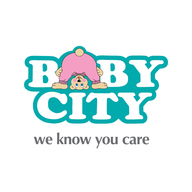



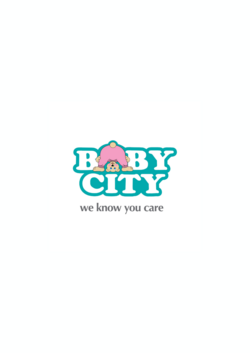
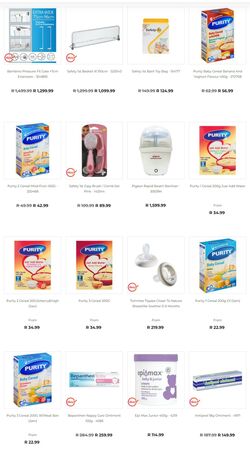
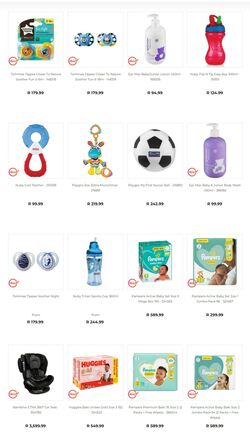
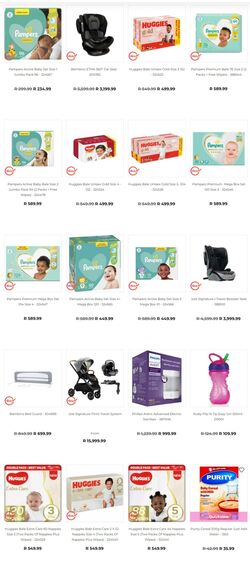





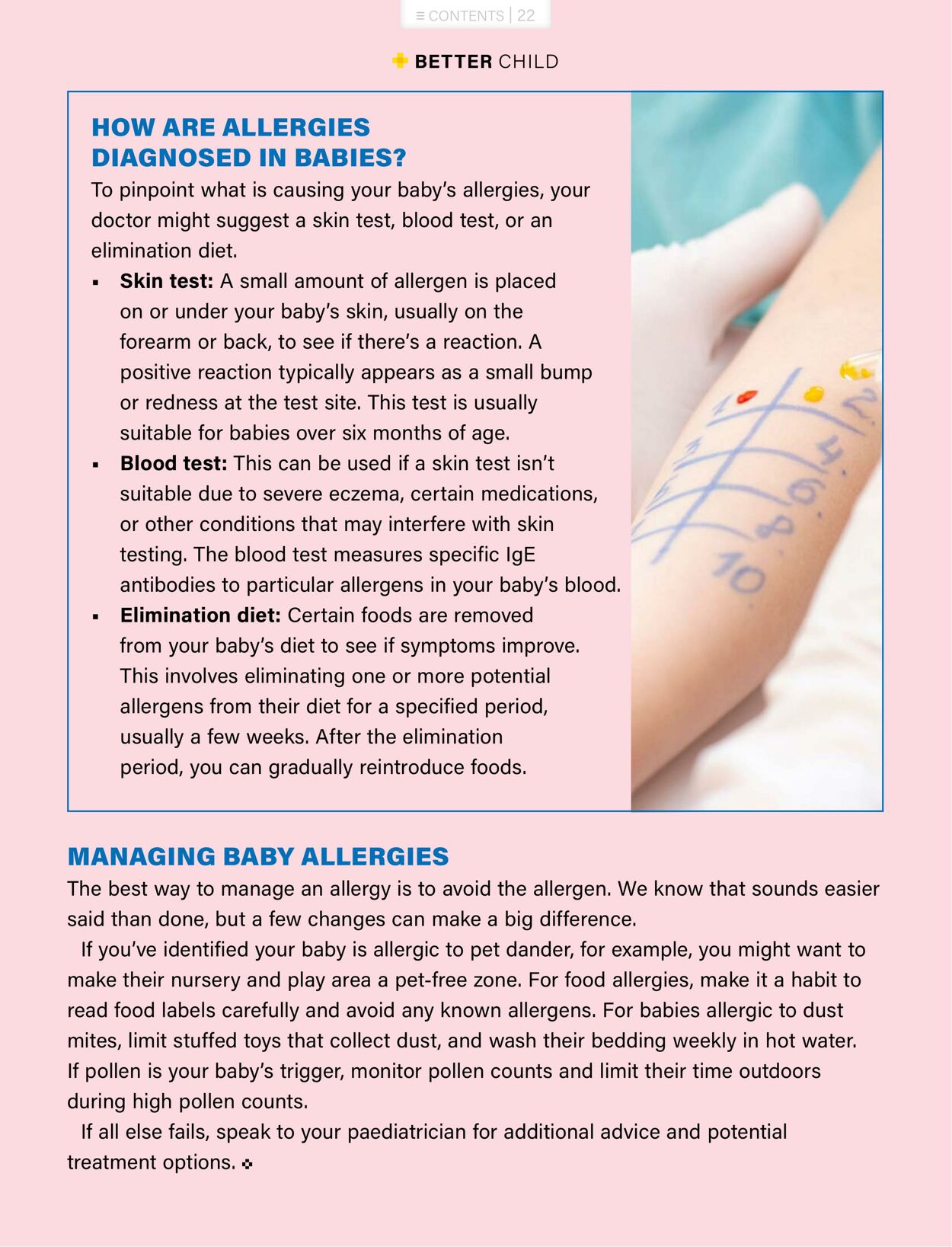
Products in this catalogue
~~ BETTER CHILD HOW ARE ALLERGIES DIAGNOSED IN BABIES? To pinpoint what is causing your baby’s allergies, your doctor might suggest a skin test, blood test, or an elimination diet. « Skin test: A small amount of allergen is placed on or under your baby’s skin, usually on the forearm or back, to see if there's a reaction. A positive reaction typically appears as a small bump te or redness at the test site. This test is usually - s suitable for babies over six months of age. “al = Blood test: This can be used if a skin test isn’t suitable due to severe eczema, certain medications, or other conditions that may interfere with skin testing. The blood test measures specific IgE antibodies to particular allergens in your baby's blood. « Elimination diet: Certain foods are removed from your baby’s diet to see if symptoms improve. This involves eliminating one or more potential allergens from their diet for a specified period, usually a few weeks. After the elimination period, you can gradually reintroduce foods. MANAGING BABY ALLERGIES The best way to manage an allergy is to avoid the allergen. We know that sounds easier said than done, but a few changes can make a big difference. If you've identified your baby is allergic to pet dander, for example, you might want to make their nursery and play area a pet-free zone. For food allergies, make it a habit to read food labels carefully and avoid any known allergens. For babies allergic to dust mites, limit stuffed toys that collect dust, and wash their bedding weekly in hot water. If pollen is your baby’s trigger, monitor pollen counts and limit their time outdoors during high pollen counts. If all else fails, speak to your paediatrician for additional advice and potential treatment options. +
| Name | Details |
|---|